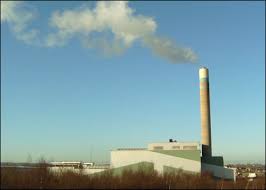Here is a letter to the editor Will recently wrote in regards to our County's plans to build an incinerator in Frederick County despite the fact that there is no looming crisis for waste disposal.

With the recent tsunami of conservatism that swept the country, all of our local county commissioners opposed to this boondoggle were swept out of office (all Democrats) and an entirely Republican Board of Commissioners was chosen.
Interestingly, despite the cost of this project and the 'fiscal conservatism' boasted by most of these Republican candidates, they are all in favor of this massive expenditure. The outgoing Democratic commissioners were all opposed.
Thus went our best chances for true fiscal responsibility in Frederick County.
Just had to put that out there!
Here's link for mercury poisoning:
http://en.wikipedia.org/wiki/Mercury_poisoning

And here's Will:
Most of the candidates running for local office are focused on the economy and growth issues. With unemployment high, commercial space sitting empty, and a stagnant real estate market, that is understandable. But, the reality is Frederick county is caught up in a National, and to some extent, global recession. There is little local politicians can do to jump start the National economy. The only real “local” issue in the upcoming election is whether or not the next board of County Commissioners proceeds with the planned $600 million dollar municipal solid waste incinerator. The single largest debt ever imposed on the citizens of Frederick County.
It only seems logical to see how existing municipal waste incinerators are doing. After all, the past is the best prediction of the future. In the last few weeks alone, 3 incinerators have made headlines. Harrisburg, PA’s incinerator is about to go into receivership because the city can no longer pay for it; Hudson Falls, NY is trying to sell their incinerator; and most troubling, Spokane, WA’s incinerator violated air pollution limits for mercury in June. Why did it take until September for the violation to surface? Apparently, the permit for Spokane’s incinerator only requires continuous monitoring for three pollutants. Nine other pollutants, including mercury, are only tested for annually. Much like the proposed Frederick incinerator, the Spokane incinerator purports to have “state of the art” pollution controls. Officials think that there was something that was going through the system that was high in mercury. That is precisely the problem when permits only require an annual snapshot of emissions for the majority of pollutants of concern. More troubling is that the monitoring requirements in Spokane’s permit are typical for incinerators.
Proponents of incineration like to point out that incinerators are designed to meet EPA Clean Air Act Standards, known as maximum achievable control technology levels (MACT). MACT requires the maximum reduction of hazardous emissions, taking cost and feasibility into account. The MACT must not be less than the average emission level achieved by controls on the best performing 12 percent of existing sources, by industrial category. What this translates to, is “do as good as the best in your field are doing.” In other words, these are technology-based standards and not health-based standards. MACT levels represent what can be reasonably achieved versus what is safe for human health and the environment.
Mercury is a naturally occurring element and a potent neurotoxin. Mercury is hidden in compact fluorescent lamps (the coiled light bulbs everyone has been installing), light switches, thermostats, thermometers, irons, space heaters, security systems, and batteries (yes, even kids shoes that light up have mercury in them). Once released, the mercury travels through the air and is deposited back to earth through precipitation or dry deposition. The mercury is deposited directly into aquatic environments, and also deposited on land surfaces, where it can be transported into aquatic ecosystems through run-off and erosion. Much of this mercury deposition occurs within 50 miles of the smokestack from which it is released.
Maryland Department of Environment currently has a state-wide fish advisory for mercury recommending limits on the consumption of fish and shellfish due to mercury levels found in their tissues. We already have a problem with too much mercury in the environment in MD.
High variability is considered the norm in todays municipal waste stream. Disposable products are increasingly coming from oversees manufacturers that operate under less stringent regulation and oversight (cadmium in childrens jewelry anyone?). In addition, no matter how successful state recycling campaigns are, some batteries and compact florescent light bulbs will always make it into the waste stream. Is transferring a solid waste problem into an air pollution problem really the best solution?
William Morrow
Whitmore Farm
10720 Dern Road
Emmitsburg, MD 21727
www.whitmorefarm.com








 The primary concerns have been how these regulations would affect small producers who are not setup for such a deluge of regulation and paperwork. These rules would also address a problem that doesn't exist in small production models like ours because we work with nature and don't have the same problems with bacterial and other contamination that industrial agriculture experiences with ever increasing frequency.
The primary concerns have been how these regulations would affect small producers who are not setup for such a deluge of regulation and paperwork. These rules would also address a problem that doesn't exist in small production models like ours because we work with nature and don't have the same problems with bacterial and other contamination that industrial agriculture experiences with ever increasing frequency.
